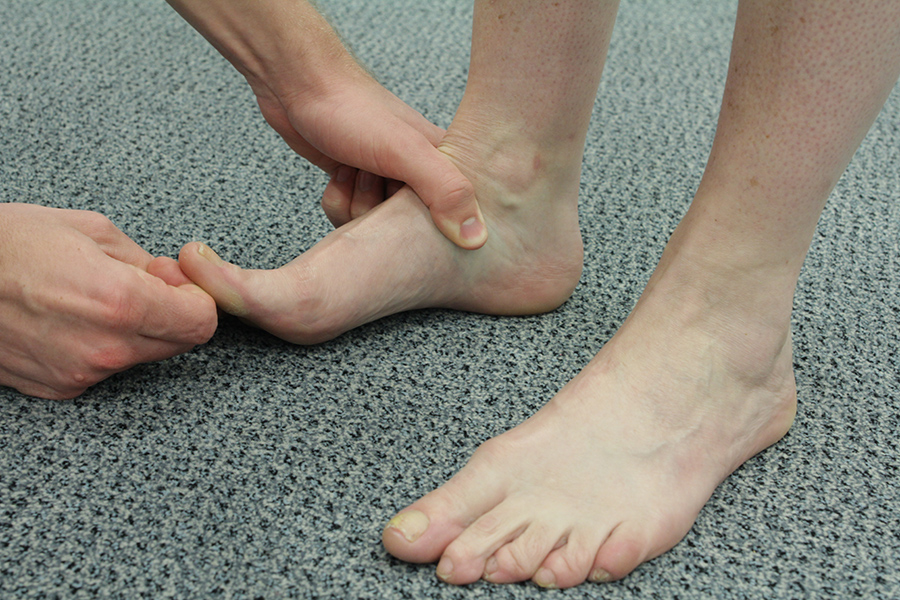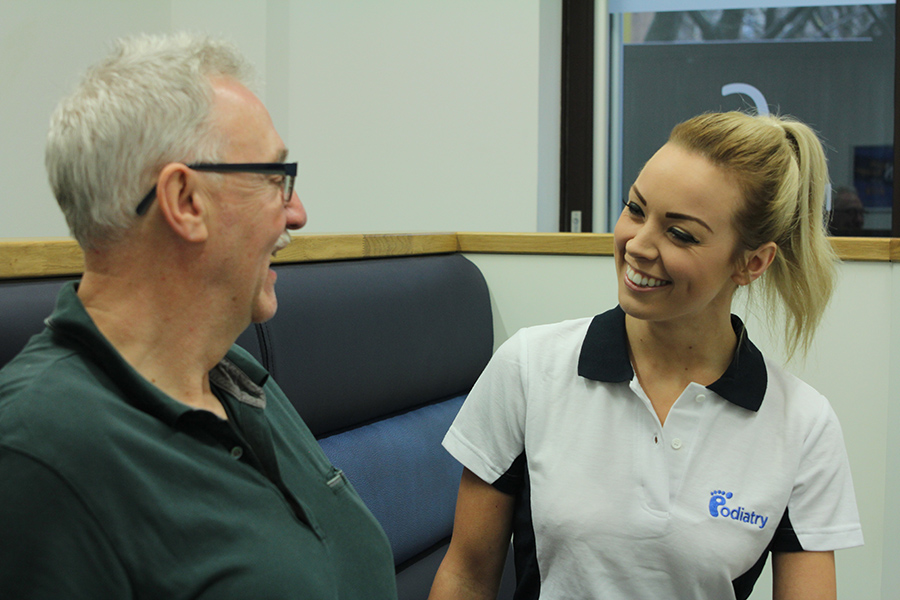Bunions
A bunion appears as a bony lump at the side of the big toe joint. Bunions can be painful and uncomfortable, making accommodative footwear hard to find, and daily activities such as walking difficult. As well as the physical signs and symptoms, bunions can also be a great source of embarrassment for many people. If you have a bunion visit a podiatrist who will be able to advise you on what you can do to prevent your bunion from worsening and provide you with information on what to do to ease its symptoms.
What is a bunion?
Hallux abducto valgus (HAV) is the medical name given to a bunion, which is a deformity of the big toe joint. A bunion appears as a bony lump that typically occurs at the base of the big toe. The big toe joint consists of two bones; a metatarsal and a phalangeal, which together form the first metatarsophalangeal joint. The bony lump that appears is actually the metatarsal head, as trauma occurs extra bone can grow on the surface of the metatarsal head, this extra bone growth is known as an exostosis. An exostosis that has formed on the metatarsal head can make a bunion appear even larger.

What causes bunions?
A bunion is caused when the big toe (hallux) drifts towards the second toe (abducts), this results in the joint rotating so that the angulation is away from the mid-line of the body (a valgus position); hence the name hallux abducto valgus.
There are a number of contributing factors to the development of hallux abducto valgus, these include:
- Genetics: bunions often run in families
- Poorly fitting footwear
- Arthritis (e.g. rheumatoid arthritis, gout, osteoarthritis)
- Foot type (e.g. flat feet)
- They are more common in women (this is because women typically have looser ligaments compared to that of men)
There are also a number of neuromuscular and connective tissue disorders that can increase a person's chances of developing hallux abducto valgus. In this instance hallux abducto valgus occurs due to either loose ligaments (ligaments connect bones to other bones), reduced muscle tone, and/or flexible joints.
Neuromuscular and connective tissue disorders that can lead to hallux abducto valgus include:
- Cerebral palsy
- Multiple sclerosis
- Downs syndrome
- Marfans syndrome
- Ligamentous laxity
If you have one of the above conditions it does not guarantee that you will develop a bunion, however you are more likely to develop a bunion than someone who does not have one of the conditions.
What are the signs and symptoms of a bunion?
Signs and symptoms vary depending on the severity of the bunion. The most common sign is a bony lump at the base of the big toe joint. Other signs/symptoms of a bunion may include:
- Redness
- Tenderness/pain
- Bursitis: inflammation of the bursa. A bursa is a fluid filled sack that overlies a joint.
- Neuritis: inflammation of the nerve which overlies the joint
If you experience any of the above symptoms you should have an assessment with one of our podiatrists. Bunions are managed best when treated early in their formation.
Types of bunion
There are two main types of bunion, they are:
Hallux abducto valgus:Hallux abducto valgus affects the big toe joint. This is the most common type of bunion
Tailors bunion:A tailor's bunion affects the little toe joint. This is the second most common type of bunion
How is a bunion diagnosed?
Your podiatrist can tell you whether you have a bunion or not based on the physical appearance of the joint.
Benefits of podiatry for a bunion
If you have a bunion the following benefits may be achieved following podiatric intervention:
- Reduction in pain
- Reduction in inflammation
- Improvement in comfort
- Reduction in stiffness
- Prevention of the deterioration of signs and symptoms
The most benefit is achieved in the early stages of bunion development.

What would podiatry for bunions involve?
Your podiatrist will begin by taking a thorough and comprehensive medical and social history. Your podiatrist will then perform an examination of both feet and assess the movement of the joints. With the information provided from the assessment and examination your podiatrist will then devise a treatment plan specific to you, and offer advice on the best way forward. It isn't always possible to cure a bunion, but your podiatrist can help relieve any pain and maintain function.
Our podiatrist will be able to discuss possible treatment options with you. Treatment for bunions may include:
- Orthotics
- Joint mobilisation
- Padding
- Advice and education
- Splints
- Footwear review
- Surgery
Summary
A bunion is known medically as hallux abducto valgus. A bunion appears as a bony prominence and is most commonly found at the base of the big toe joint, causing pain and irritation as well as impairing function. There are a number of treatments available for bunions, the treatment most suitable for you will depend upon the severity and the symptoms you are experiencing.
To arrange an assessment please Email office@chiropody.co.uk or call 0330 088 4222.Save 5% by booking an appointment online.



We work with:

Individuals

Organisations

Health professionals
Get in Touch!
0330 088 4222
If you would like to speak to one of our specialists then please complete this form.
We are open 7 days a week








